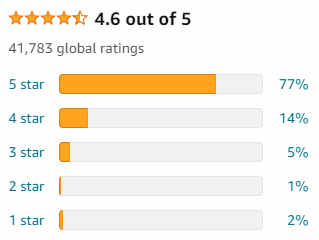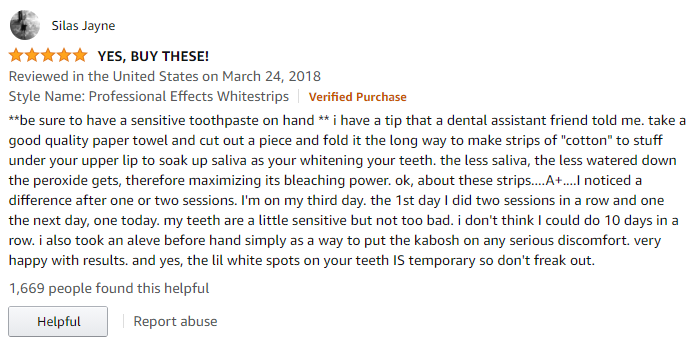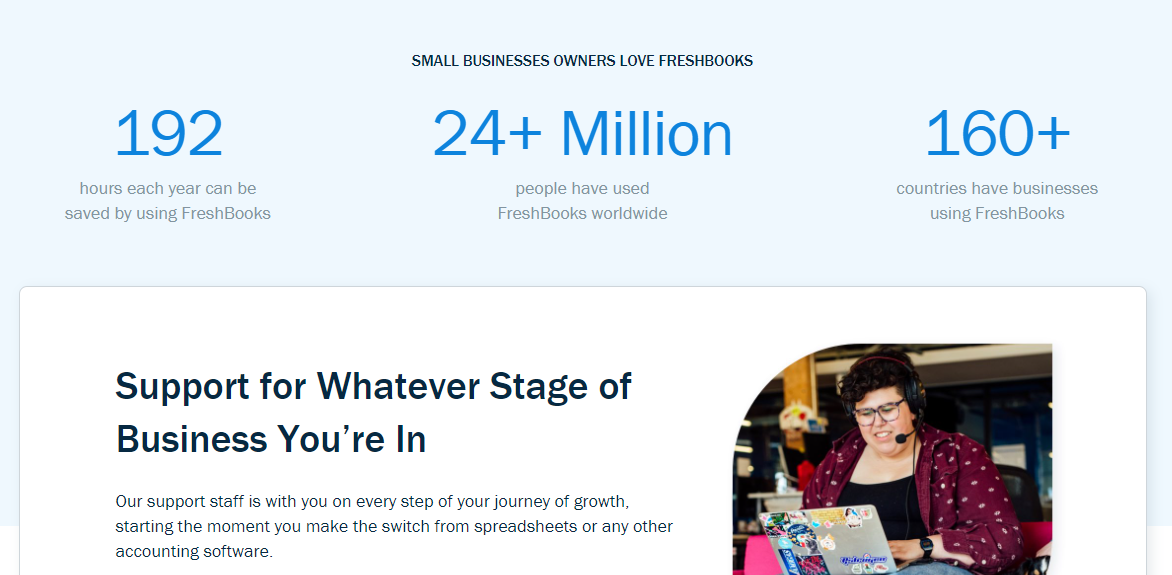5 Ways to Use Social Proof in Your Website Design to Boost Conversions
People look to social cues in their immediate environment to guide their own behavior. In the famous elevator experiment, participants were asked to face the opposite direction in an elevator. Meanwhile, unknowing subjects conformed almost immediately.
Human behavior is incredibly malleable. People look to social cues in their immediate environment to guide their own behavior. In the famous elevator experiment, participants were asked to face the opposite direction in an elevator. Meanwhile, unknowing subjects conformed almost immediately.
Psychologists have a name for this social phenomenon: conformity. Simply put it means that people change their behavior based on cues they observe in their environment. Think about the last unfamiliar situation you were put in. Maybe you were attending a wedding in a foreign country or perhaps working at a new job. If you saw others behaving in a certain way, you’re likely to follow suit in fear of looking out of place.
So what does this all have to do with website design?
It’s no secret that design plays a major role in establishing trustworthiness.
Just like how people look to their immediate environment to guide their behavior, certain cues on your website such as the presence of social proof from third parties can increase the value of your products or services.
What is Social Proof?
Social proof is the tendency for others to change their behavior based on their environment. This phenomenon is particularly prominent in social situations as we have seen from the elevator experiment. In marketing, social proof is become a powerful persuasive tool. Certain cues may make consumers more likely to pull out their wallet or think twice about their purchase. An early example of this in commerce comes in 1955 from McDonald’s.After reaching a major milestone of hamburgers sold, McDonald’s began displaying those numbers in its signs:

Those numbers were clearly visible to anyone driving by. Highlighting those figures does two things:
it instantly establishes credibility and it makes the brand more appealing.
After all, if people didn’t love their hamburgers how could they possibly have sold so many?
It’s not hard to imagine many people pulling in for a quick bite because of that simple change.
Here are some other real-life examples of social proof that many people encounter on a daily basis:
- Venues:
Bars and nightclubs often intentionally limit entry even if there is plenty of space inside. Doing so creates a line outside which increases the perception of that venue’s popularity to anyone passing by.
- Product launches:
Every year without fail, Apple launches a new iPhone in the fall. The night before there are always huge lines of people waiting in anticipation. This arouses curiosity to onlookers and also gives the impression of a popular product.
- Country clubs:
Country clubs frequently put down names down on waiting lists and are even known to turn people away. This creates a sense of exclusivity which again increases their perceived value among members.
- Bottom-line:
Social proof matters.
When a visitor first lands on your landing pages, they don’t have any reference points to determine the credibility of your offer. Fortune 500 companies like Apple and McDonald’s normally don’t have this problem as they have spent decades making their brands household names. By using the same principles behind the real-life examples described above, it’s possible to change how your products or services are perceived. With a few simple changes to your website, you can not only ease any doubts that potential customers might have but also drive more conversions in the process.
Here we’ll look at the different types of social proof and how you can implement them in your own website design.
- Product Reviews Let’s start with perhaps the most prevalent form of social proof online: Product reviews. Think about the last purchase you made from a website.
Did you immediately click the buy button?
Chances are you probably read a few reviews first before making a decision. In fact, a survey found that 70% of consumers relied on online reviews for purchasing decisions. That percentage was even higher amongst younger respondents. Reviews also affect how consumers feel about a business. Key findings from a BrightLocal survey found that 74% of consumers trust local businesses more when they have positive reviews while 60% said negative reviews would make them go elsewhere.

Reviews are powerful influencers then. It’s why some of the largest online retailers in the world prominently display them on their product pages. Amazon displays star ratings and customer reviews for each product:

Scroll further down the page and you’ll see actual customer reviews along with their ratings:

These types of reviews are often key deciding factors for shoppers as they contain actual customer feedback. The immediate benefit is that reviews help your visitors feel more confident about their purchase. Reviews can even help your products appear in the search results for unique keywords since customer feedback also gets indexed.
Putting it into practice:
The best place to include customer reviews is on your product pages and where they are clearly visible. Most shopping cart software such as Shopify and OsCommerce make it easy to enable reviews. If you currently don’t have any reviews, either ask your customers directly by following up via email or offer an incentive such as loyalty points that shoppers can redeem for discounts.
- Testimonials Testimonials are another great way to showcase social proof on your website. They lend credibility to your products or services, and can give potential buyers that extra nudge to take actions. Just like product reviews, testimonials come from actual customers and are typically in the form of a quote.
Here is an example of how FreshBooks uses testimonials on its homepage:

By showcasing testimonials from actual business owners, FreshBooks is able to establish trust and build credibility with their target audience. Those reading the testimonials can see how others have benefited and what they can expect.
Another example comes Xero which takes it a step further by featuring video testimonials from its customers:

Each video is several minutes long and showcases how business owners used Xero’s accounting software to streamline their orders and make better business decisions. Both are good examples of testimonials as a form of social proof. Potential customers can turn to these actual cases to guide their own decision. Another incentive to implement testimonials in your website design is its impact on conversions. Hotel Institute Montreux in Switzerland began experimenting with its lead generation page. The inclusion of a testimonial from a postgraduate student led to a 50% increase in conversions.

This case study demonstrates the positive impact that testimonials can have on conversions. Putting it into practice:
Prominently feature testimonials on your most valuable pages such as your homepage, product/service pages, and lead forms. Just like in the examples shown here, you’ll want to include a picture and include their name with the quote. Running A/B split tests will help you better evaluate their impact on conversions.
- Brand Logos Brand logos are another classic example of social proof and achieve two things: They lend credibility to your business and increase the perceived value of what you offer. Adding logos to your pages works especially well if those companies are recognised in your industry or if they are household brands. That kind of social proof can go a long way towards making a positive impression with potential prospects and turn them into customers. A case study on Voices.com showed that the addition of adding brand logos to their homepage had a positive impact on conversion rates:
Adding proof to the homepage had a significant effect: Voices.com had some impressive “claims to fame” that could really influence prospective customers but that weren’t clearly communicated on the website.
Several major brands are featured prominently on the homepage of Voices:

Voices is able to leverage its existing client relationships to establish itself as a company that is both trusted and in demand. This kind of social proof is incredibly powerful especially to visitors who may not have previously heard of or interacted with your brand. Media mentions also work well if any major publications have featured or reviewed your product.
Here’s an example from Animoto’s homepage:

ust like with testimonials, Including brand logos or media mentions is an effective way to lend credibility to your business. Putting it into practice: Does your business work with any well known brands or have your products been featured in a major publication? Then consider adding those logos or media mentions to your website such as on the homepage where it is clearly visible.
- Trust Seals Trust seals provide assurances to visitors as they pay for their purchase. These icons can typically be found in the footer of most e-commerce sites. Some provides assurances that a transaction is secure online (VeriSign), that a site is free of malware (McAfee Secure), or that the business has been accredited (BBB Online).
The purpose of trust seals is to show that a website is legitimate and has been verified by credible third parties. In a survey from Econsutancy and Toluna, respondents were asked the following question:
If you are shopping from a retailer you don’t know well, how would you decide whether to trust the website?
Close to half indicated that they would look for trust marks:

Surprisingly, that answer received the highest response and even beat out professional website design when determining trustworthiness. The inclusion of trust seals then makes shoppers feel more confident about their purchase. A survey conducted by Baymard Institute found the following seals generate the most trust for online shoppers:

It’s no secret that good design is a crucial component to making a positive impression. But online shoppers will look for certain cues on a website before completing a transaction. Trust seals help to ease any doubts that new visitors might have and their presence has even been shown to increase conversions.
Putting it into practice:
You can’t simply just slap those icons on your website. For example, to get the Norton Secured badge you’ll need to purchase an SSL Certificate and will need to wait for it to verify. Others follow a similar process before you can add them. Once you’re able to get them, add those seals to your checkout page or to the footer of your website.
- User/Customer Numbers
Our company has many customers!
Join over 100,000 customers today!
People are easily impressed by numbers. It helps to explain why the second headline is more catchy and more likely to get noticed. Showing how many people have used or purchased from your business is another effective form of social proof. It’s similar to the example cited earlier of McDonald’s putting the number of hamburgers sold in its signage. It gives the impression of a popular product which in turn entices onlookers to notice. Showcasing some numbers on your own website can have a similar effect. It shows that people use and trust your brand, thus immediately increasing perceived value to new visitors.
Basecamp offers an excellent example by displaying a trajectory of new accounts at the bottom of the page:

And here’s how Social Media Examiner uses subscriber numbers to get visitors to sign up for its newsletter:

Numbers convey popularity and can further lure visitors in.
